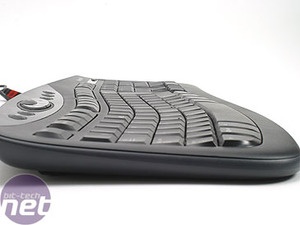
Microsoft Comfort Curve 2000 Keyboard
Cost: £14Microsoft has something of a tradition of making ergo-friendly products. The software giant was the first to introduce the 'banana' split keyboard way back in 1995, with claims that it would reduce RSI and increase typing ability. Whilst there is no doubting its ergonomic capabilities, it divided those who found it an abomination to type on and those who swore never to go back to a 'normal' keyboard again.
The Comfort Curve is an evolution of the ergonomic keyboard. It's designed to be better for your wrists, but less of a jarring learning curve for those used to standard things. How does it do?





There are also a set of multimedia and internet keys across the top, as you'd expect.
Using the Comfort Curve is a slightly strange experience. I am quite a fan of the hardcore banana style keyboards, but I find the action on the keys to be generally a little too stiff. I was very happy with the more laptop-style 'light' keys on this board, and the slight curve was actually more comfortable to type on. However, I couldn't work out why the enlarged keys were enlarged - was there a reason to pick these, and not others? They weren't keys that were used more, in my experience of using the device. It was a bit odd.
It's hard to recommend a product like this because it's so geared to individual taste. However, at a mere £14, which we'd say is darned good value, you might as well have a punt on the Comfort Curve and see if it rocks your world.

MSI MPG Velox 100R Chassis Review
October 14 2021 | 15:04








Want to comment? Please log in.